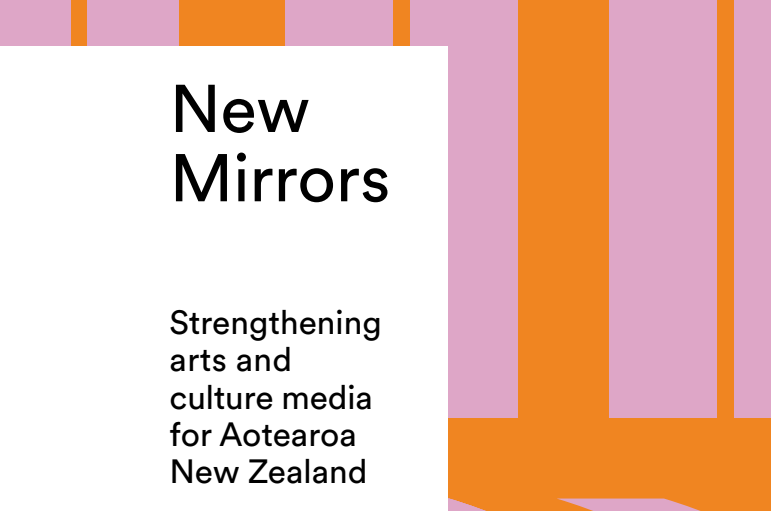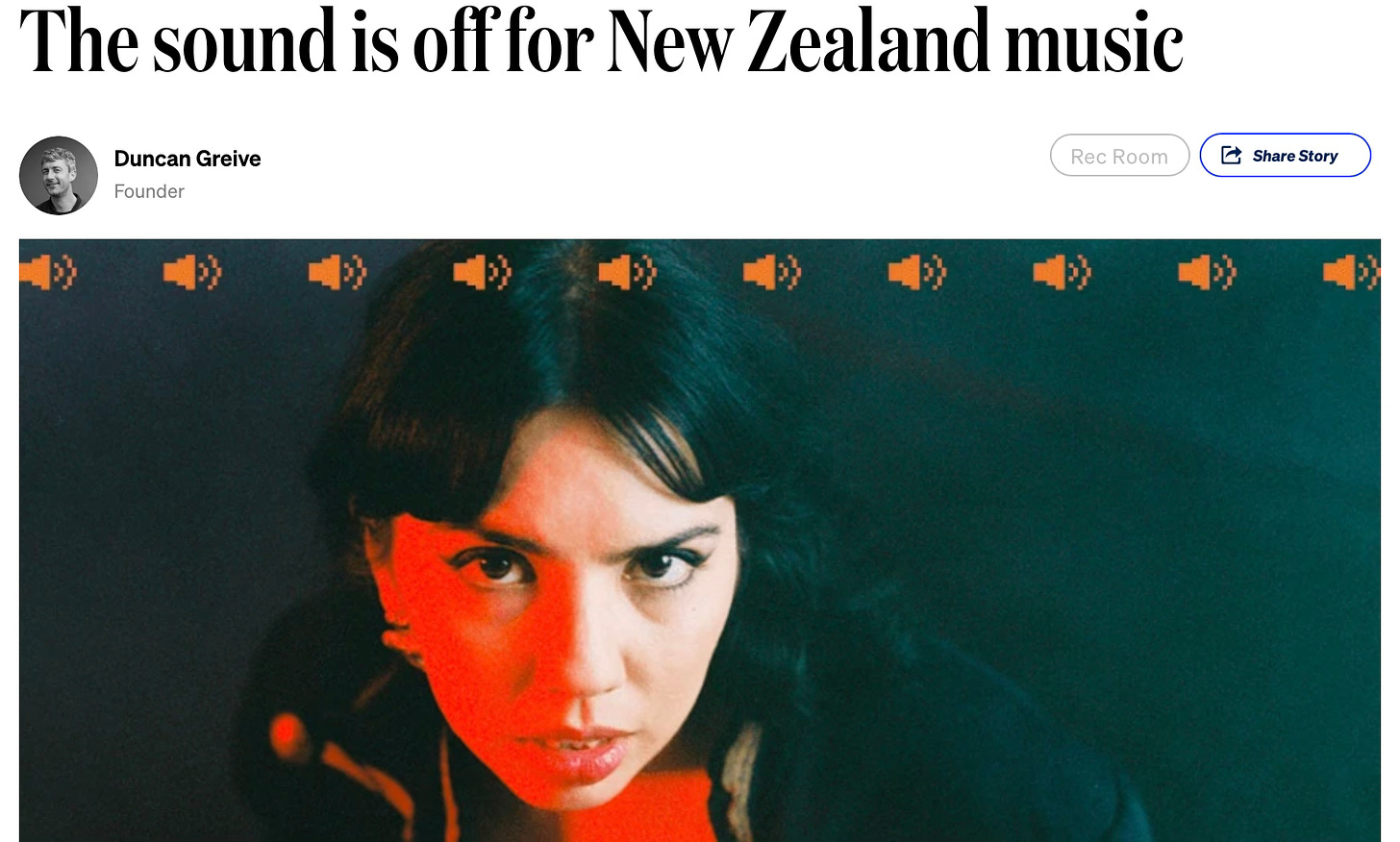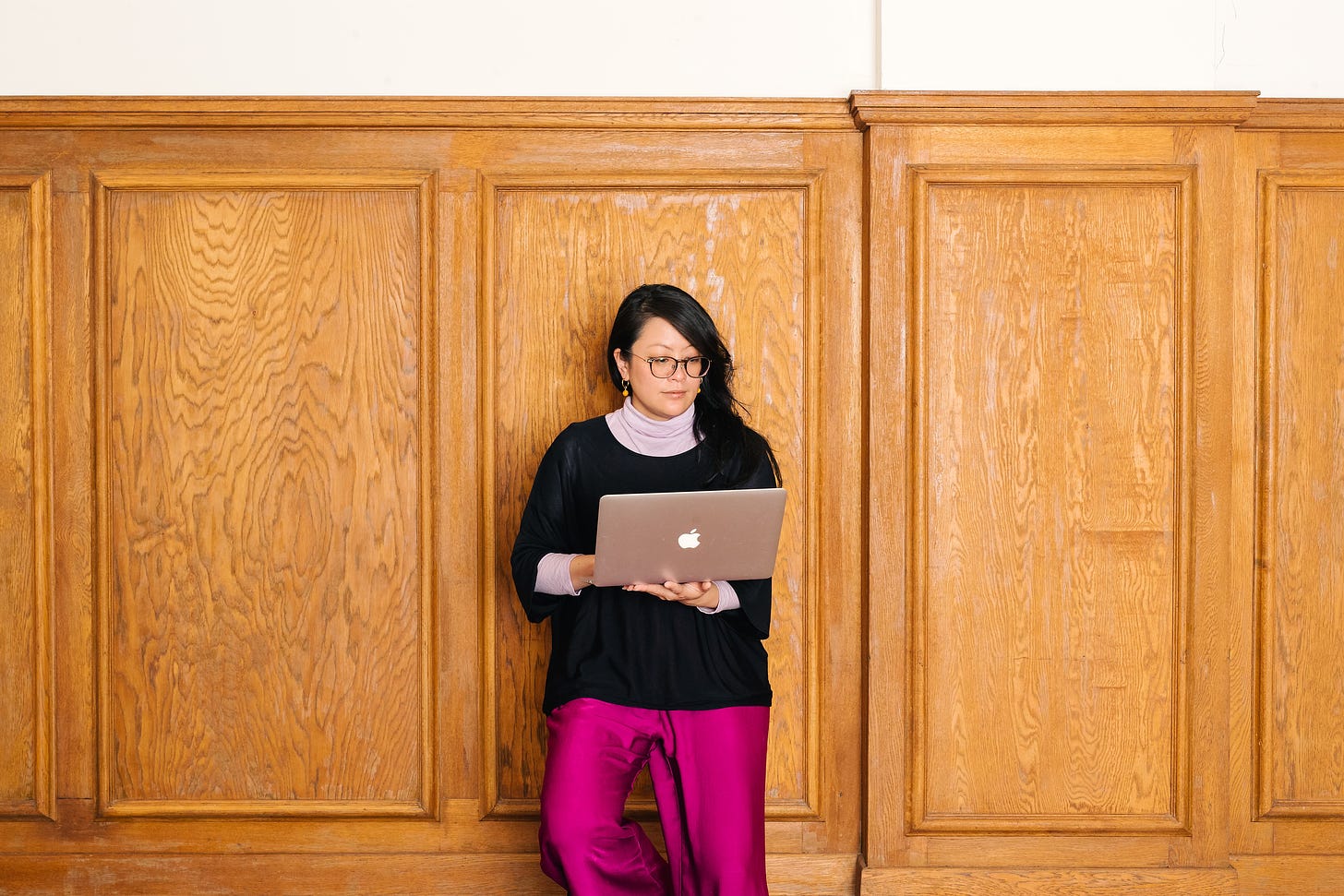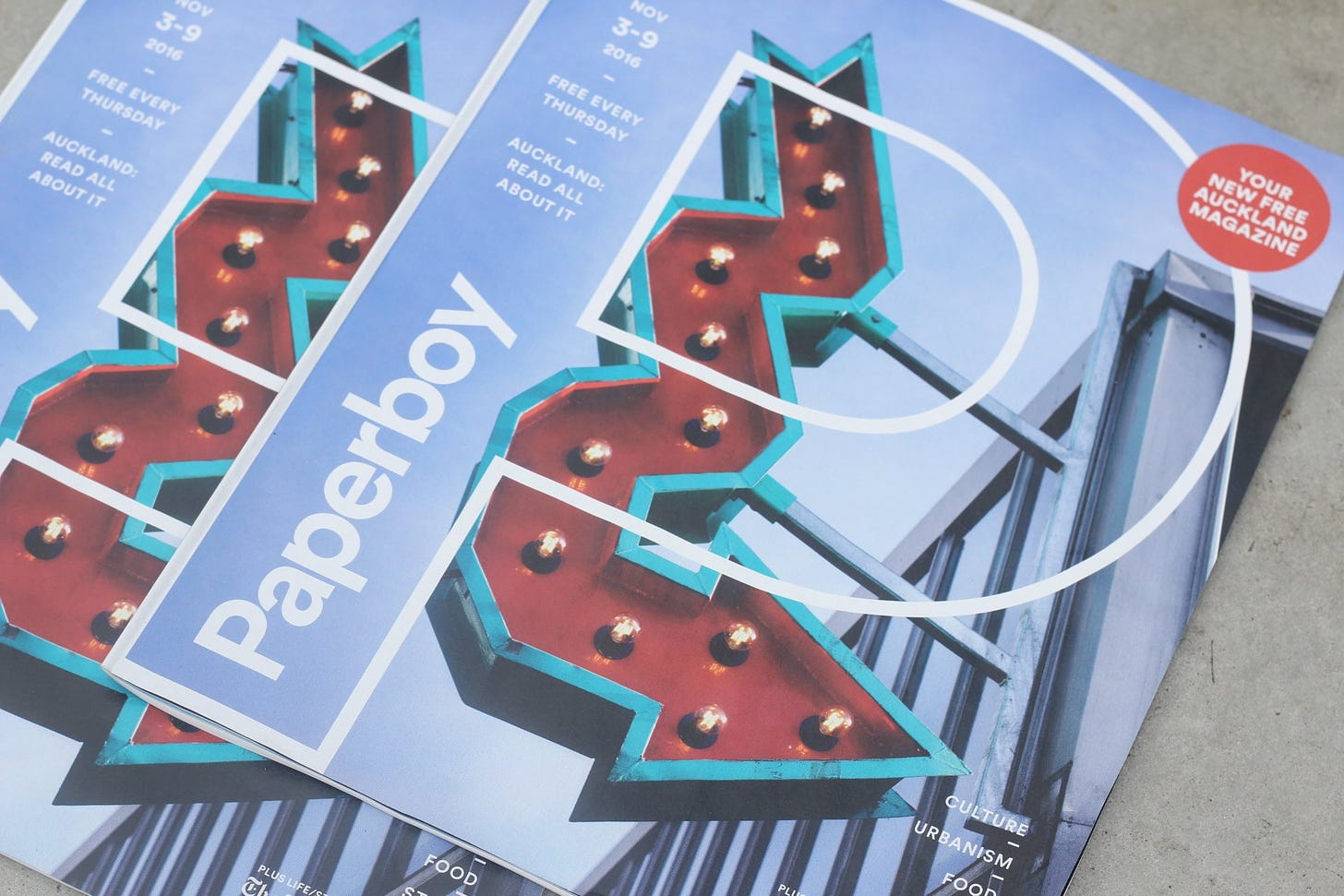What was it like writing New Mirrors? 'Bleak'.
Yet the co-author of a report into the demise of arts and culture coverage in Aotearoa is surprisingly optimistic about its future.
She'd put in the hours, done her research, transcribed her interviews, and written up her report.
The job was nearly done.
For five months earlier this year, Rosabel Tan spoke to everyone she could to ask them about the topic at hand.
She asked editors how important arts and culture coverage was to them.
She queried journalists on how stretched newsrooms are now.
She questioned PR representatives about who was left to pitch their stories to.
And she talked to artists about what having their work written about, discussed and critiqued meant to them.
Along with her co-author Dr James Wenley, Tan did all of this for New Mirrors, a Creative NZ project examining what Aotearoa is missing when arts and culture coverage disappears from mainstream media.
By early November, just before the report’s release, Tan got back in touch with the dozens of people she’d interviewed.
It was a quick, polite request, a check-in to make sure what they’d told her was still accurate.
They told her that things had changed.
Many had already lost their jobs and left media.
“So many people no longer worked in journalism at that point,” she says. “Charlie Gates at The Press had gone. Sarah Daniell was restructured. All of those [NZ Herald] editors were gone.
“It was just so shocking to me that even within that short amount of time, things had continued to erode so rapidly.”
Initially pitched in 2020, and finally completed earlier this year, New Mirrors lays bare the stark reality of what's happened to arts and culture coverage in Aotearoa.
It shows that coverage has all but disappeared. Very few journalists are left to write stories, even fewer editors are left who care.
As a result, culture reporting – we’re talking music, film, TV, theatre and arts reporting – is rarely given prominence. If it does end up on front pages, it’s often because something negative has happened.
“An arts story, especially a local story, is never going to get on the Stuff homepage. But 50% of clicks come through the homepage, so art stories generally do not perform well according to online metrics.” -Anna Fifield, the former editor of The Post, in New Mirrors
As a result, artists are left fighting for attention on social media platforms alongside conspiracy theories, right-wing ideologies and horrific war coverage.
“I’ll go on to do a post about selling T-shirts. And then I see a kid with blown off arms on there. And I start crying,” singer Erny Belle told The Spinoff recently.
I wanted to talk to Tan because I've been covering this topic right here, complaining about the lack of music festival coverage, talking to musicians about what the lack of critical reviews means to them, and examining potential fixes.
As someone who spent 20 years in newsrooms proving arts coverage could reach readers, writing about that pivot is emotional for me. I have to space out those stories, take a break, and gather myself before working on the next one.
Ask Tan – a former theatre critic and the co-founder of The Pantograph Punch – if it ever became too bleak for her as she put New Mirrors together and she’ll reply with a one-word answer.
“Always.”
‘We need to do it next year … we need to do it now’
In 2003, the local roots group Opensouls received a review they didn’t like.
So they responded the only way they knew how: they wrote a song about it.
Called ‘The Critic’, the pithy track took aim at the review’s author, Duncan Greive. It revealed personal details about him, attacked his day job as a postman, and included the line: “Please believe, Duncan, when you speak, it just don’t mean dick.”
Ten years later, Rosabel Tan got Greive and Opensouls’ Chip Matthews together to talk about it. The result, published on Phantograph Punch, was a revealing reflection on the tension that exists between an artist and a critic.
“I got them to reflect on it and it was just so exciting,” says Tan. “To be able to listen to an artist and a critic talk about criticism and how important that actually was to both of them.”
She brings this up as an example of how far things have declined. “I don’t know if you would get that now,” she says.
She’s right. That was a time when arts and culture coverage flourished, an environment where mainstream media had a record numbers of arts and culture reporters. Opinions were published daily, across newspapers, magazines, websites, blog posts and forums.
When a new album came out, or a major concert happened, or a big theatre show got underway, critics would try and be first to cover them, to spark that debate.
I specifically remember sitting at my desk at 4am, trying to finish a 2007 review of a Guns N’ Roses concert for Stuff.co.nz, swearing under my breath at Axl Rose for arriving late on stage.
I also knew that it had to be done, that multiple critics were sitting at their own computers around Auckland doing exactly the same thing.
Along with newspaper inserts like Canvas, TimeOut and Sunday, magazine-style websites like The Spinoff and Tan’s own Pantograph Punch launched in an environment where there was an easier way to find an audience and advertising.
Street press also thrived, with freebies like Jeremy Hansen’s Paperboy and NZ Herald’s Volume becoming must-read weekly publications, chock-full of spiky opinions and reviews.
Real Groove and The Groove Guide magazines were there until 2011, music channel C4 lasted until 2014, and Rip It Up made it through to 2015.
On a Zoom call from Manchester, Tan says: “The thing I think about all the time was how much of it there used to be.”
If she sounds forlorn, that’s because she is.
New Mirrors paints a picture of publicists writing their own content and having it published verbatim, of specialist culture journalists being virtually non-existent, leaving artists feeling their work sometimes exists in a vacuum once it’s been released.
To illustrate this point, Tan says: “It's so rare to have an art story on the front page.”
She also says: “A lot of the higher decision makers treat the erosion of cultural journalism as a foregone conclusion.”
“When I started at The Press in 2007, there was an arts editor, two film reviewers, two or three cultural writers, a feature writer who specialised in culture—that’s all gone now. That’s all completely gone. I sort of aspired one day to be an arts editor. That looked like the coolest job in the world. But that ladder I was climbing—they sawed the top off it, as I was climbing. It’s kind of like... oh... okay, cool.” -Charlie Gates, former Senior Reporter for The Press and Stuff, in New Mirrors
New Mirrors offers a two-pronged approach to fix this. It suggests an Arts Media Centre be set up, similar to the Science Media Centre, acting as support for those covering the arts. It also believes there’s a need for a dedicated fund to be established to support arts and culture journalism. The estimated cost of this is $5 million a year.
Putting New Mirrors together has clearly taken its toll on Tan. Yet, if you ask her if she believes it will have an impact, she immediately perks up.
She believes it will. New Mirrors may take time to get in front of the right people, but it’s out there, it exists, and it points to some answers.
She points to the several years it took to set up the Science Media Centre as an example. A government-led response to it may just take some time.
“There’s hope in that some of that meaningful change does take a long time, and it’s OK if it doesn’t happen immediately,” she says.
Like me, and like everyone else in the industry hoping for this situation to improve, Tan struggles with this timeline, because the need is so desperate.
“My brain’s like, ‘We need to do it now … we need to do it next year.’”
For more, read New Mirrors and listen to RNZ’s interview with Tan.
Thanks for reading and supporting Boiler Room. If you like what you’ve seen here, you might want to sign up for my free weekly newsletter below.








More great reporting on this problem. I've been looking at the scene with an eye to solutions and one thing I've noticed is, that where copy still exists, for example in NZ Musician or on Music 101, it's usually boring copy. Musicians (my area, dunno about the rest) aren't being outrageous or saying outrageous things as often. I don't mean taking sides on the issues of the day, even taking the wrong side is usually still boring, I mean being interestingly controversial in their approach to life and ideas about their art. Possibly the inhibitions of online surveillance culture, possibly the jazz school training and generally more privileged backgrounds of those who get careers today, possibly the cookie cutter ideas of identity politics and therapy speak displacing hard-won originality, or - quite possibly - critics and interviewers have stopped asking the right questions for fear of exposing an artist or offending their readers.
I absolutely will! I love foisting my music opinions upon others. And yeah I agree that finding great music through friends is amazing but i personally have had a lot of luck with the algorithms (at least on Spotify). But i also love going on blogs and newsletters to find stuff. I’ll really miss pitchfork if it turns to shit and i really appreciate what you’re doing here, so please don’t stop.
Me and my mates found this cool thing recently called Music League which is an app where you get a group of mates together and start a ‘league'. Each week every person submits a couple songs on a theme (e.g. best songs of 2023, best covers of all time, greatest kiwi classics etc (but it could be anything)), then the app puts them all into a Spotify playlist and distributes it to everyone and they all vote on the best tracks. It’s so fun! I’ve found a bunch of great music that way.